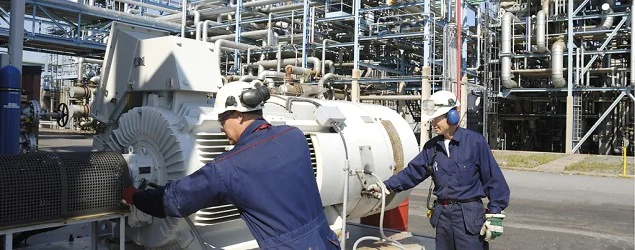Why Petrochemical Equipment Manufacturers Need RFID Integration
The oil and gas industry operates in some of the harshest environments on earth, and equipment manufacturers face serious challenges:
- Lost or misidentified assets: Manual tracking is difficult in large refineries or offshore platforms.
- Safety risks: Untracked equipment can endanger worker safety in explosive areas (ATEX/Zones).
- Compliance gaps: Regulatory audits (por ejemplo, API, OSHA) require accurate equipment history.
La integración de RFID aborda directamente los siguientes puntos débiles:
- Real-time tracking of assets, even in explosive or high-temperature areas.
- Automate safety inspections of valves, Tuberías, and pressure vessels.
- Ensure compliance and provide tamper-proof digital logs for audits.
Su ventaja competitiva:
- Offer ATEX-certified, IoT-enabled systems embedded with RFID technology.
- Offer additional benefits for solutions that reduce customer downtime and risk.
Key Petrochemical Challenges Solved by RFID Integration
1.Asset Tracking in Hazardous Environments
Issue: Manual record keeping on offshore rigs or refineries results in 15-20% of assets being misplaced.
Solución RFID:
- Use explosion-proof RFID tags in ATEX Zone 1/2.
- Track equipment such as pumps, valves, and pipes using handheld or fixed readers.
2.Safety and Maintenance Gaps
Issue: Missed inspections can lead to leaks or explosions (por ejemplo, unmonitored pipeline corrosion).
Solución RFID:
- Embed high-temperature resistant RFID tags on equipment to store maintenance logs.
- Use PLC-integrated systems to trigger automatic alerts for overdue inspections.
3.Compliance and Audit Failures
Issue: Missing equipment history can lead to risk of fines during API 581 or PSM audits.
Solución RFID:
- Store inspection dates, certifications, and repair logs on high-memory RFID tags.
- Synchronize data to CMMS (por ejemplo. IBM Maximo) via RFID middleware (por ejemplo. Siemens RF650R).
How RFID Integration with Petrochemical Industry Works:
1.Hardware Setup:
- Etiquetas RFID: Attached to equipment (por ejemplo. pipe bolt-on tags, valve epoxy tags).
- RFID Readers: Fixed or handheld (por ejemplo. RFIDHY HY-R6100 for field use).
- Control System: Integrate RFID data with SCADA/DCS via OPC UA or Modbus.
2.Data Flow:
- A technician scans a tagged valve with a handheld reader.
- The reader transmits the tag’s EPC code and sensor data (por ejemplo. temperatura) to the Distributed Control System (DCS).
- If thresholds are exceeded, the DCS triggers a maintenance workflow or a safety shutdown.
3.Software Integration:
- Middleware (Middleware): Honeywell Forge or PTC ThingWorx for real-time asset analytics.
- API: Custom scripts link RFID data to ERP systems (por ejemplo. SAP S/4HANA).
Ofrecemos:
- UHF RFID tags for hazardous environments: Ensure reliable reads in chemical plants.
- Cost-effective RFID solutions for refineries: Reduce pipeline monitoring costs by 35%.
- RFID for subsea equipment tracking: Obras 500 meters underwater.
Ready to optimize your petrochemical equipment systems?
We help equipment manufacturers deliver safer, smarter solutions. En contacto con nosotros:
- Test RFID tags certified for use in explosive or hot areas for free.
- Get integration blueprints for Siemens, Honeywell, and ABB systems.
[Submit Info] Schedule a Free Consultation
FAQs
Q: Can RFID tags withstand high-pressure washdowns in refineries?
A: Sí! We have professionally customized high-pressure washdown RFID tags that are resistant to oil and dirt and read accurately.
Q: How can RFID be retrofitted into existing petrochemical equipment?
A: Use bolt-on tags or epoxy mounting solutions for seamless integration without welding.








